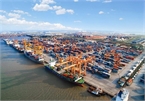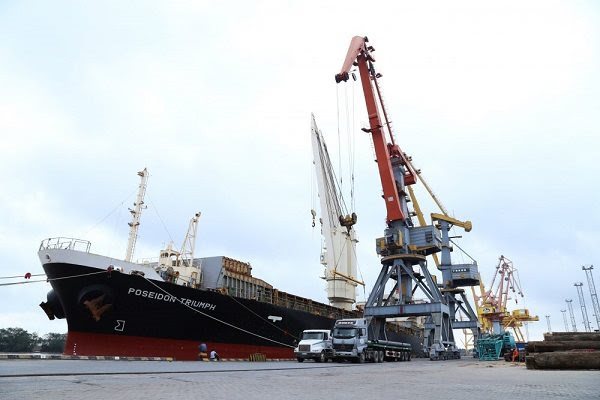|
In the first quarter of this year, State-owned Vietnam National Shipping Lines (Vinalines) reported a decline of some VND626 billion (US$27 million) in its consolidated revenue and a consolidated loss of some VND113 billion (US$4.8 million). If the pandemic lasts until the end of this year, its holding firm will suffer a drop of roughly VND300 billion in revenue compared with the first quarter and see an end-year loss of some VND76 billion. Vietnam Ocean Shipping JSC (Vosco), a member of Vinalines, is also struggling. The firm reported losses of VND86.4 billion (US$3.7 million) and saw its revenue drop by some VND80 billion (US$3.4 million) compared with the same three months last year. Sea transport activities have been brought to a standstill as the demand for cargo transport, especially in China, Europe and the United States, has been declining sharply. The port systems of Vinalines and private firms are all feeling the impact of the pandemic as vessel operators have either cancelled their trips or docked at their facilities for up to 10 days. Warehousing activities have seen volumes drop by a staggering 40% from the year-ago period. Vinalines claimed that most of its fleet is underemployed, resulting in a lack of cash flow to pay off debts and maintenance and warehousing costs. On a positive note, the total volume of cargo through Vietnam’s seaports in the first quarter rose by 8.4% to roughly 159 million tons. Of these, container goods saw a year-on-year increase of 14% to over five million tons. General cargo vessels operating on intra-Asia and Southeast Asia routes faced difficulties as well, so Vietnamese ship owners brought their ships back home, leading to cut-throat competition with domestic fleets, according to the Ministry of Transport. Sharp decline in passenger transport by sea The number of passenger and tourism vessels passing through Vietnam’s seaports has suffered a steep decline since the viral pandemic broke out early this year. For example, an international luxury cruise ship was barred from docking at Danang port in the central part of Vietnam in late February, amid fears over Covid-19, the disease caused by the new virus. Also, stringent regulations affecting small groups of international travelers visiting multiple countries have resulted in many cruise lines reducing the number of tourist destinations on offer, including those in Vietnam. In March, only two international cruise ships docked in Vietnam –1.6% of the figure recorded a year earlier, according to the Vietnam Maritime Administration. Given the escalating public health crisis, international cruise lines have no plans to resume their services to Vietnam, while the Government has yet to map out a plan to welcome international tourists by sea. SGT |
||
Lan Nhi

Cutting costs crucial to survival of VN maritime transport
Cutting costs is critical for the maritime transport sector, which is seeing a slowing down in activities due to the COVID-19 pandemic.

Steering committee to guide maritime economy
Prime Minister Nguyen Xuan Phuc has recently issued a decision to establish a national steering committee to implement Viet Nam's marine economic development strategy by 2030, with a vision to 2045.
 Maritime transport firms in Vietnam are feeling the brunt of the novel coronavirus pandemic as a large number of their ships are idle due to the falling demand for cargo transport.
Maritime transport firms in Vietnam are feeling the brunt of the novel coronavirus pandemic as a large number of their ships are idle due to the falling demand for cargo transport.